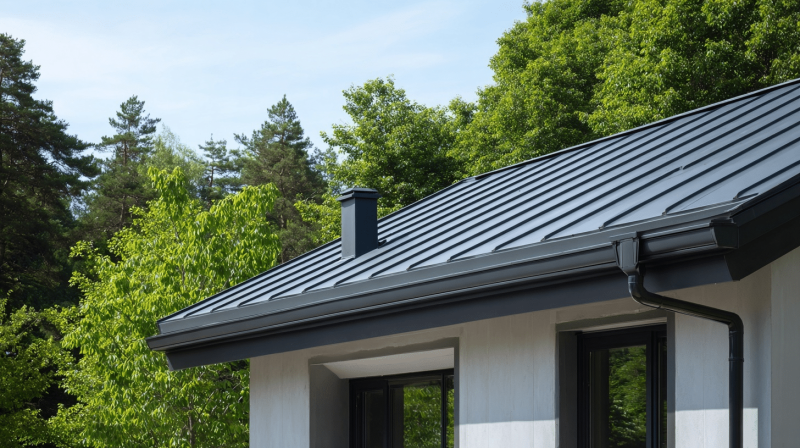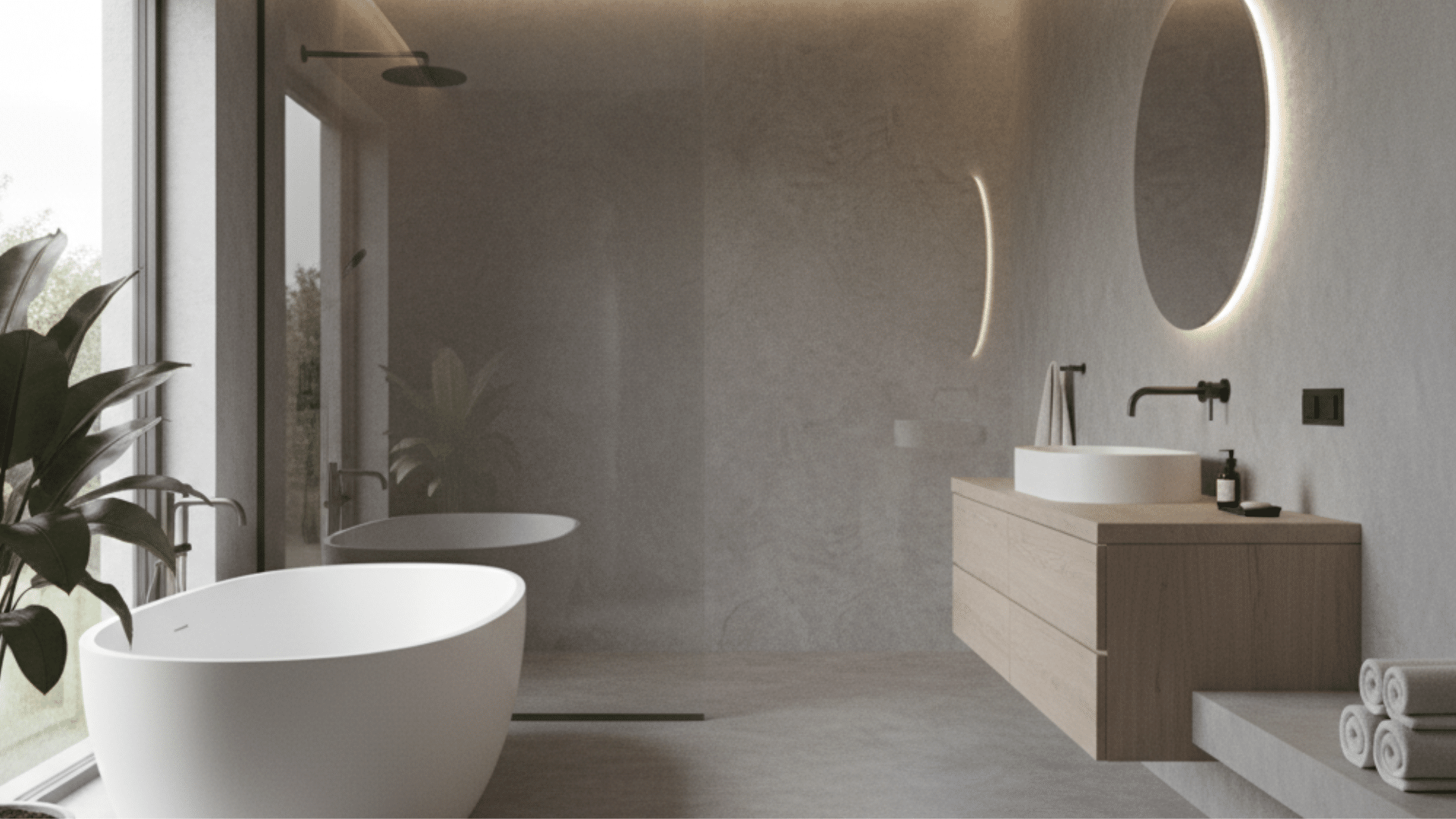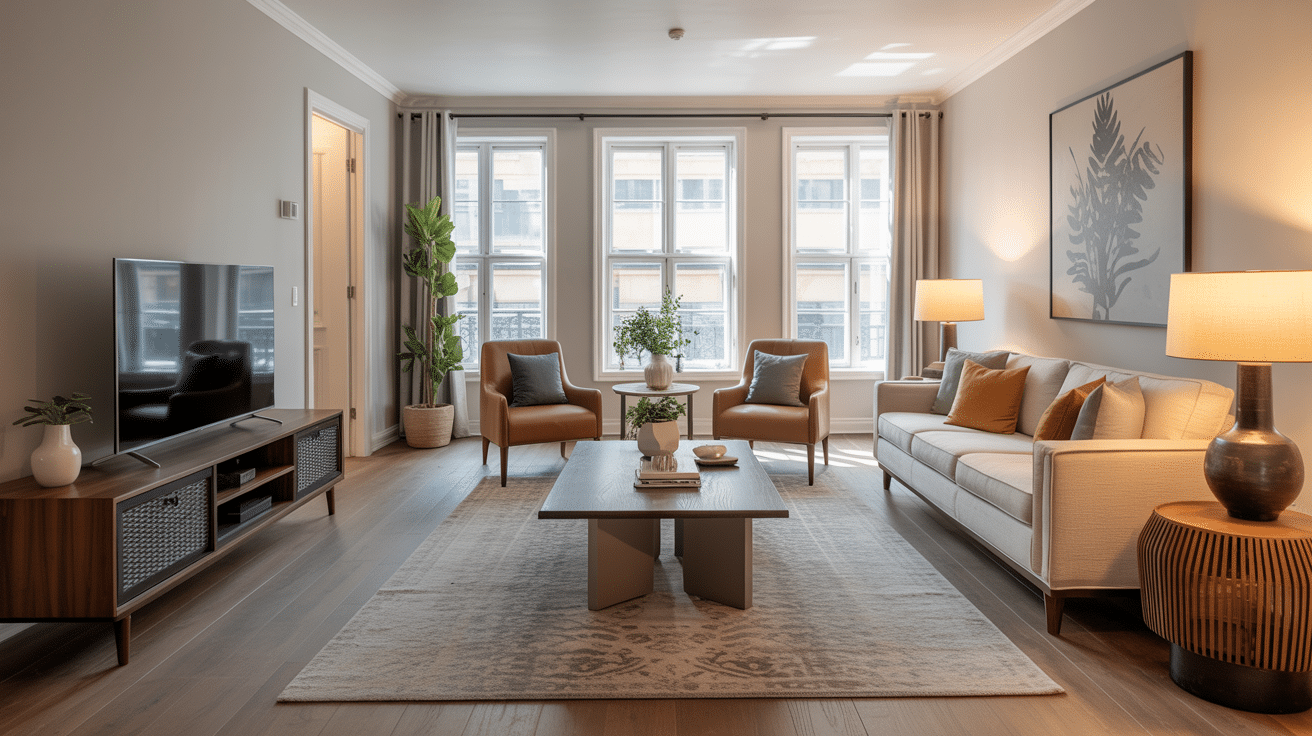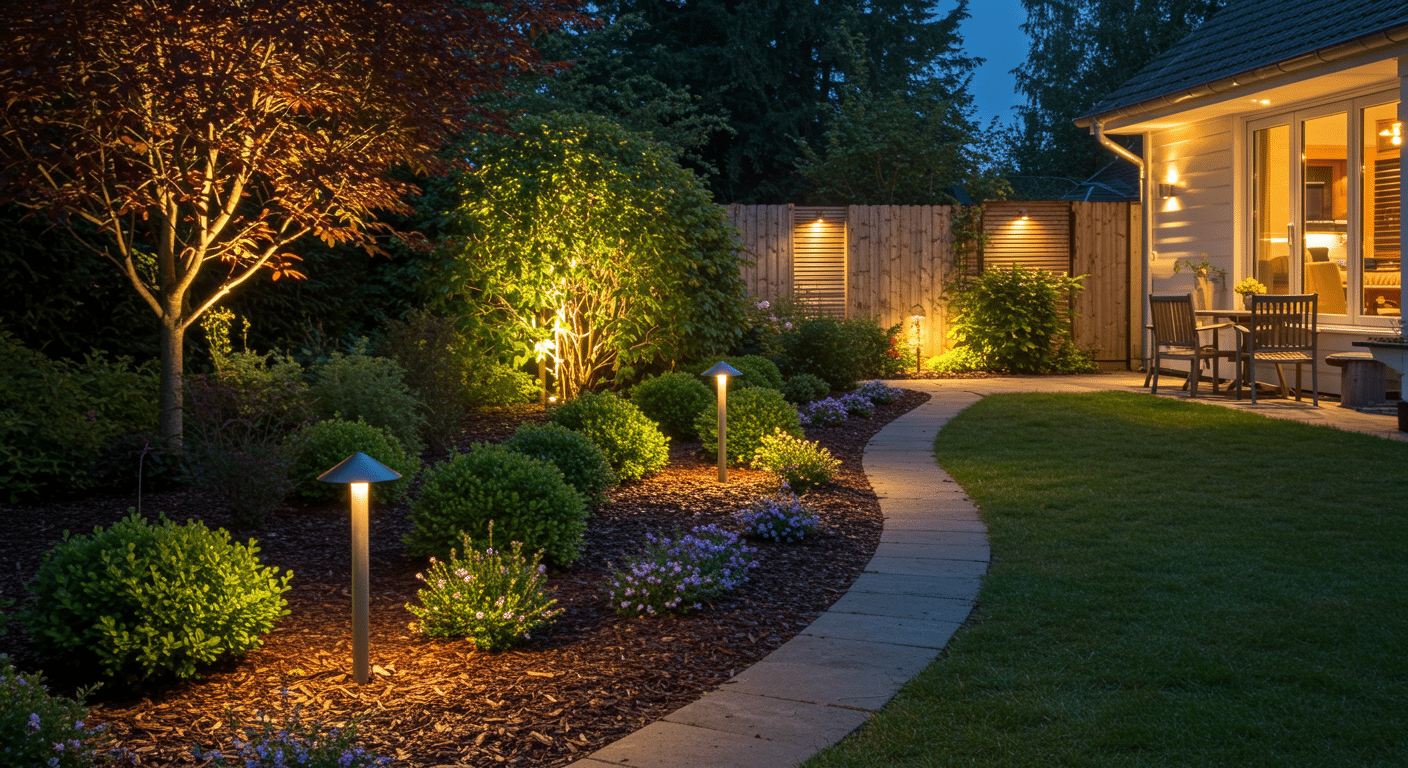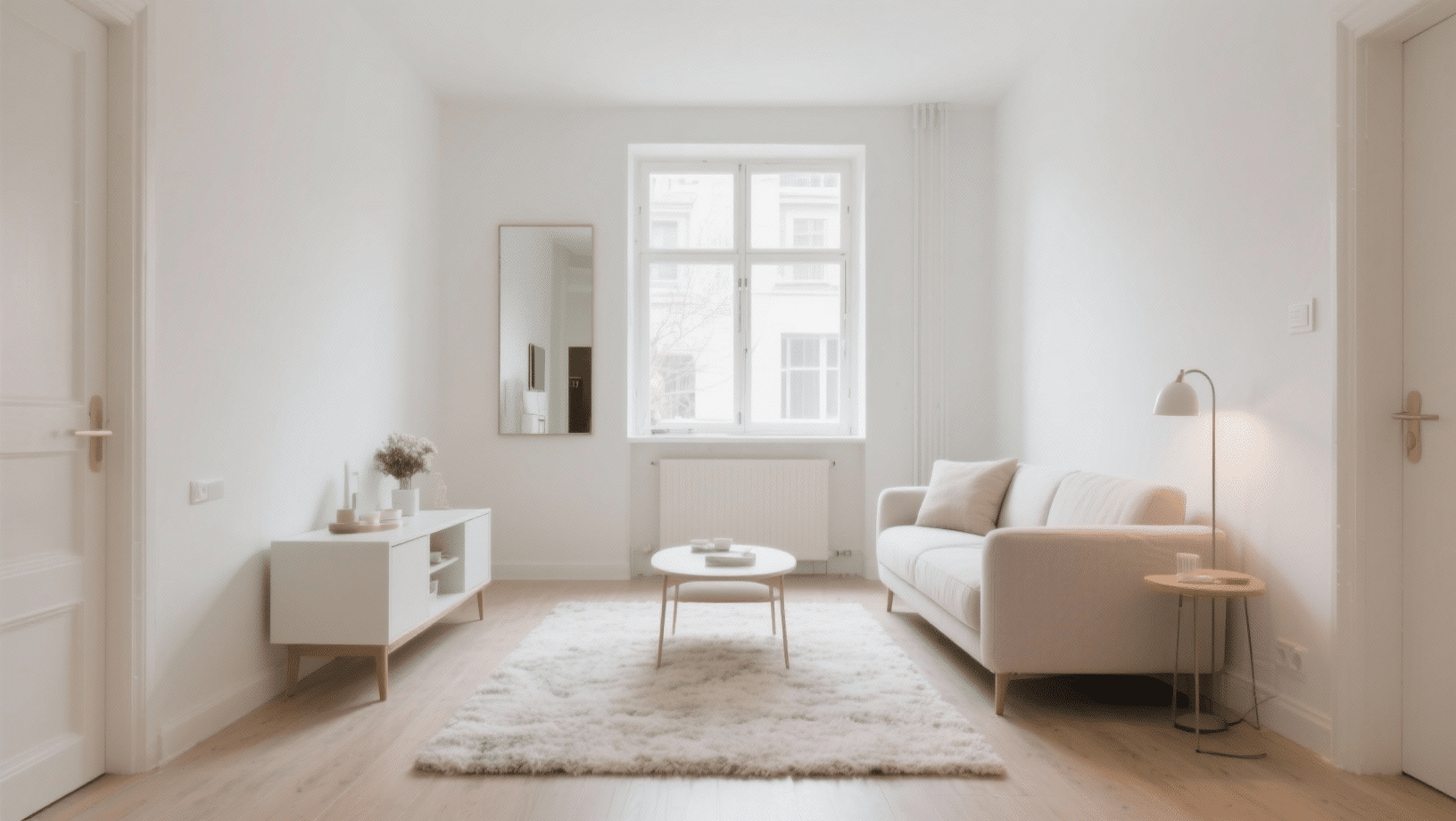Installing a corrugated metal roof seems straightforward. But get the slope wrong, and you’ll face water pooling, leaks, and costly repairs down the road.
I’ll show you exactly what is required for minimum slope for corrugated metal roof to perform properly and last for decades.
In this blog, I’ll cover the standard minimum slope requirements, explain why slope matters so much for metal roofing, and share practical tips to help you avoid common mistakes. You’ll also learn how different factors like climate and roof design affect your slope calculations.
By the end, you’ll know exactly how to plan your corrugated metal roof installation for maximum protection and durability
Why Minimum Slope is Important for Corrugated Metal Roofs
The minimum slope for corrugated metal roof is crucial because it ensures effective water drainage, preventing water pooling that can lead to leaks and corrosion.
Without adequate slope, rainwater and snow may accumulate, increasing the risk of structural damage and reducing the roof’s lifespan. Proper slope also helps to shed snow efficiently in colder climates, minimizing heavy loads that could strain the roof.
Additionally, meeting minimum slope requirements helps maintain manufacturer warranties and complies with building codes. A well-sloped roof also supports better airflow and ventilation, reducing condensation and potential moisture problems.
Overall, the minimum slope is key to roof durability, weather resistance, and long-term performance of corrugated metal roofing.
The Standards and Codes for Minimum Slope
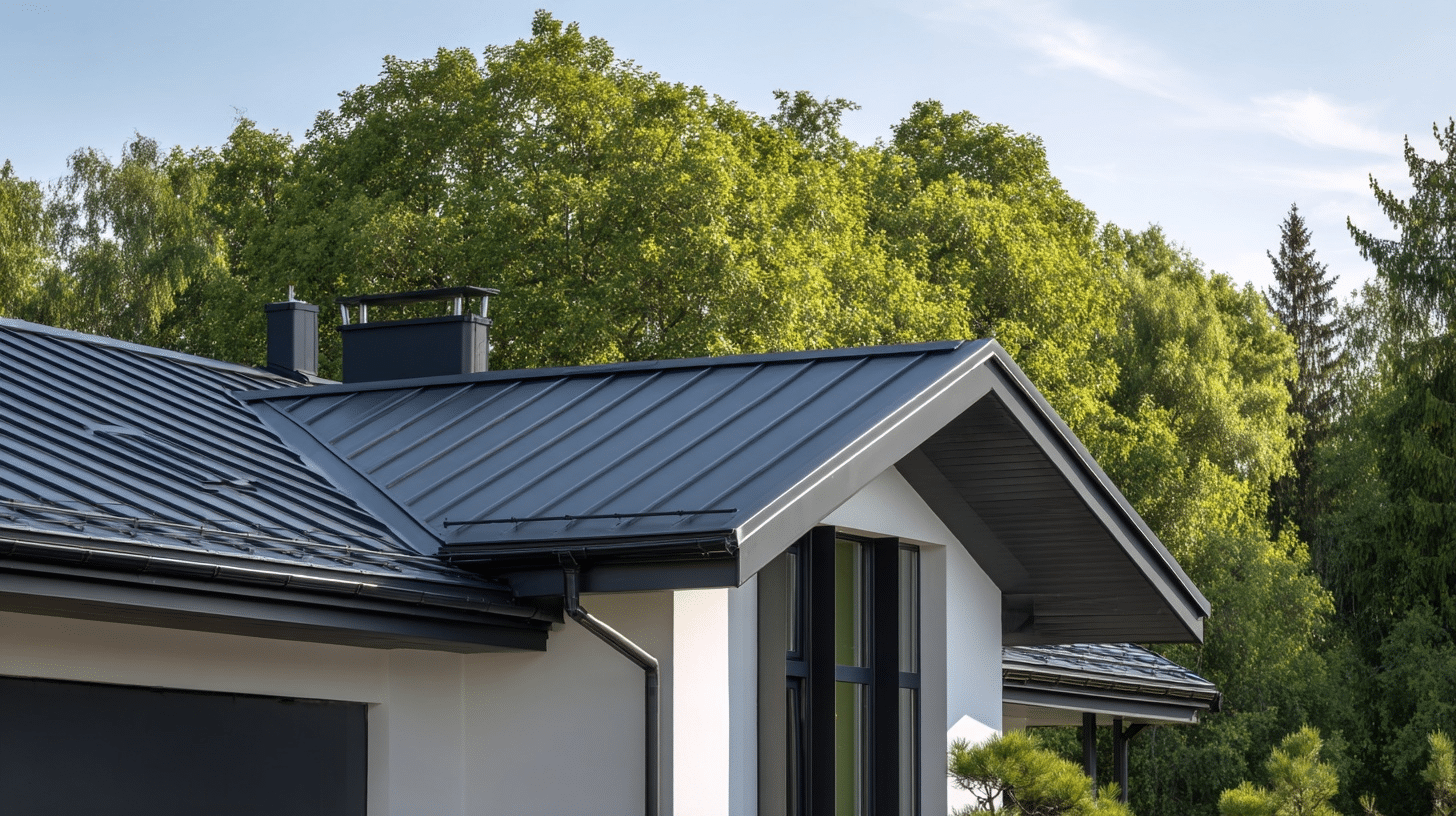
Minimum slope standards and codes for corrugated metal roofs are vital to ensure proper drainage, durability, and compliance with legal and manufacturer requirements.
The 2021 International Residential Code (IRC) specifies minimum slopes for metal roofing panels in Section R905.10.2, mentioned in the following:
- Lapped, nonsoldered-seam metal roofs without lap sealant require a minimum slope of 3:12 (25%).
- If lap sealant is applied, the minimum slope can be reduced to 1/2:12 (4%).
- For standing seam metal roofs, the minimum slope is 1/4:12 (2%).
- Manufacturer-specific recommendations often align with IRC but may vary; they emphasize following installation guidelines to maintain warranties.
- The use of sealants and specific installation techniques (like applying lap sealants) influences the acceptable minimum slope by improving water tightness and allowing lower slopes without leaks.
- Proper fastening and sealing are crucial at low slopes to prevent water infiltration
The Risks of Insufficient Roof Slope
Insufficient slope on a metal roof poses several risks that can compromise the roof’s functionality and durability.
One major issue is water ponding; without adequate slope, water can accumulate on the roof surface, increasing the risk of leaks and water damage.
This standing water also promotes corrosion and material deterioration over time. Additionally, debris tends to accumulate more easily on low slopes, clogging drainage systems and further impeding runoff.
In colder climates, insufficient slope can cause snow and ice buildup, adding excessive weight that stresses the roof structure and raises the potential for damage or collapse.
Finally, inadequate slope can lead to poor panel performance, such as buckling or gaps due to restricted thermal expansion, reducing the roof’s lifespan and voiding warranty.
The Most Common Roof Slopes
Roof slopes play a crucial role in determining how water drains off your roof, how much snow it can hold, and even the overall architectural style of a home.
Understanding the most common roof pitches can help in both selecting the right roofing material and ensuring proper installation.
| Slope Category | Pitch Ratio | Angle (Degrees) | Common Use Cases | Notes |
|---|---|---|---|---|
| Low Slope | 1:12 to 3:12 | ~4.76° to 14.04° | Commercial buildings, modern residential roofs | Requires special waterproofing; unsuitable for heavy snow areas |
| Moderate Slope | 4:12 to 6:12 | ~18.43° to 26.57° | Most residential homes (asphalt shingles, etc.) | Good balance of drainage and walkability |
| Steep Slope | 7:12 and above | 30.26° and higher | Cottages, Gothic and Victorian styles | Excellent drainage, striking aesthetics, harder to maintain/walk on |
Note: The degree in a roof slope refers to the angle of inclination between the horizontal plane (ground level) and the sloped surface of the roof. It’s a geometric way of measuring how steep the roof is.
Factors Influencing Minimum Slope for Corrugated Metal Roof
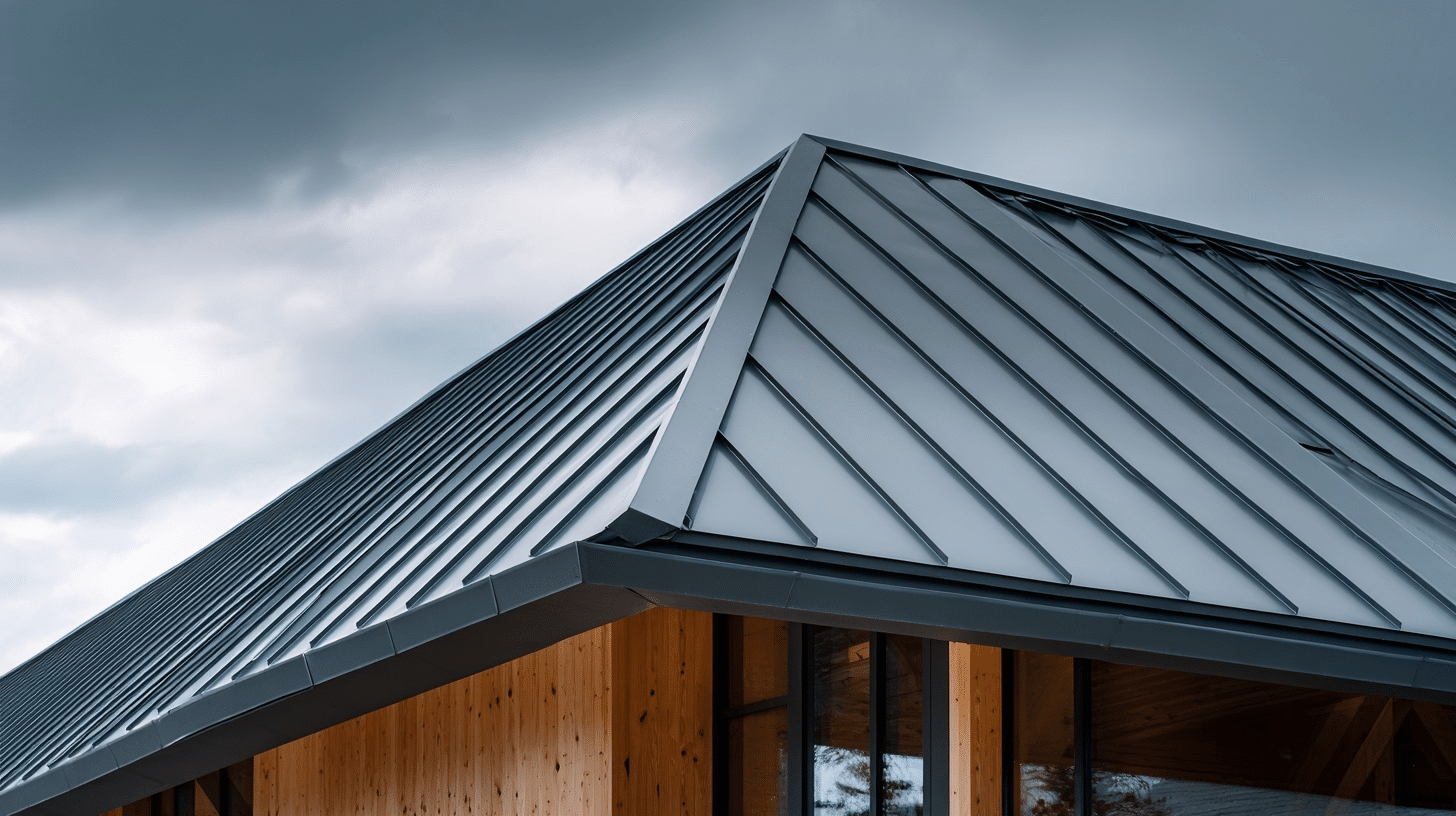
Minimum slope requirements for corrugated metal roofs aren’t arbitrary; they depend on several key factors that ensure your roof performs well and lasts long.
The following are the main factors I consider for minimum slope for corrugated metal roof:
1. Roofing Material
The type and profile of metal roofing material significantly determine the minimum slope. For example, corrugated metal roofs typically require a steeper slope, usually about 3:12, because their overlapping seams need adequate pitch to shed water effectively.
In contrast, standing seam roofs, with their raised seams, can function well at lower slopes, such as 1/4:12. Manufacturer specifications guide me here, as improper slope can void warranties or lead to premature roof failure.
2. Local Climate
I always factor in the local climate conditions where the roof is installed. Regions with heavy rainfall, frequent storms, or snow loads demand steeper slopes for optimal water and snow runoff, preventing pooling and leaks.
Conversely, in milder climates, a lower slope might suffice. Wind patterns and humidity levels also influence slope choice as they affect wear and moisture accumulation on the roof surface.
3. Roof Design
The overall architectural complexity of the roof affects the minimum slope needed. A simple gable roof may require less slope compared to more complex roofs with multiple valleys, hips, or intersecting planes, which need steeper slopes to avoid water trapping.
I also consider roof size and drainage layout to ensure the slope adequately directs water off the roof, preserving structural integrity.
4. Building Codes and Manufacturer Guidelines
To comply with legal and warranty requirements, I check the local building codes and manufacturer’s instructions.
Codes like the 2021 IRC specify minimum slopes for various metal roofing types, often conditional on installation methods like applying lap sealants.
Following these rules isn’t optional; it’s essential for safety, durability, and insurance compliance.
5. Installation Techniques and Sealants
The installation methods, including the use of lap sealants and fasteners, play a role in defining the acceptable minimum slope. Proper sealing can allow for slightly lower slopes by preventing water infiltration at overlaps.
Poor installation at low slopes increases the risk of leaks, so I emphasize precise workmanship and correct materials to maintain roof watertightness and longevity.
Installation Tips for Corrugated Metal Roofs at Minimum Slope
Installing corrugated metal roofs at a minimum slope requires careful attention to ensure proper water drainage and avoid leaks.
The following are some practical tips I follow when installing corrugated metal roofs at or near minimum slope:
- Confirm Minimum Slope: I make sure the slope is at least 2:12 to 3:12 (meaning about 2 to 3 inches of vertical rise per 12 inches of run), as corrugated metal generally requires this for proper drainage and to prevent water infiltration.
- Start Installation at the Eaves: I begin laying sheets at the eaves and work upward, extending the first row over the bottom purlin and eaves so water drains into the gutter or away from the structure.
- Orient Sheets Against Prevailing Wind: I position the panels so that the side lap edges face away from the prevailing wind direction to reduce wind-driven rain getting under the seams.
- Panel Overlap: I always overlap adjacent sheets by at least one corrugation profile to provide good waterproofing and cover seams thoroughly.
- Use Appropriate Underlayment: Applying a high-quality waterproof underlayment beneath the corrugated panels is essential to prevent leaks because low-slope roofs have a higher water exposure risk.
- Seal Side and End Laps Properly: I use compatible sealants or tape on panel overlaps and end laps to secure watertight connections, especially important at minimum slopes.
How Do You Choose The Right Roof For A Metal Building?
When choosing the right roof for a metal building, I start by considering the material options like steel, aluminum, copper, and zinc, each offering different durability and aesthetics.
I assess my building’s climate and location to pick a roof that withstands weather conditions effectively. The roof style and panel type are also crucial; decide between standing seam, corrugated, or stone-coated metal depending on maintenance and appearance preferences.
Budget plays a role, too, as metal roofs vary in cost based on materials and complexity. Finally, I ensure the slope and design fit the building’s architecture while meeting manufacturer warranty requirements for long-term reliability
Common Misconceptions About Metal Roof Slope
Metal roof slopes are often misunderstood, leading to common misconceptions that affect homeowner decisions and installation practices.
The facts about metal roof slope are essential to ensure proper function, longevity, and aesthetic appeal.
- Even roofs that appear flat have a subtle slope to allow proper drainage and prevent water pooling, which protects against leaks and damage.
- While steeper slopes help shed water and snow more effectively, they increase material costs and installation complexity. The key is finding an optimal slope suited to climate and design.
- Many modern metal roofing systems can be installed on low-slope roofs, provided they meet the minimum slope requirements to avoid leaks and ensure durability.
- Different metal roofing types have different slope requirements; for example, standing seam roofs typically require a minimum slope of 1/4 inch per foot, while corrugated metal roofs often need steeper slopes.
- Manufacturers often specify minimum slope requirements in their warranties, so failing to meet these can void coverage.
The Bottom Line
Getting your corrugated metal roof slope right isn’t just about following building codes. It’s about protecting your investment and avoiding headaches later.
I’ve walked you through the minimum slope for corrugated metal roof, key slope requirements, from the standard 1:4 minimum to adjustments for your specific situation.
Don’t cut corners on this detail. A properly sloped roof means decades of reliable performance. If you’re unsure about any aspect of your installation, consult with a roofing professional who understands metal systems.
Your roof is too important to get wrong. Take the time to plan it right, and you’ll have peace of mind for years to come.


